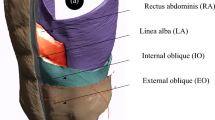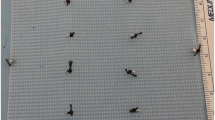Summary.
Mesh implantation to repair incisional hernia involves extensive disturbance of the integrity of the abdominal wall. To define the physiological requirements, we measured the elasticity of the abdominal wall of 14 anatomic samples. The complete abdominal wall was excised and stretched at a strain of 0–24 N in horizontal, vertical and oblique (upper and lower abdomen) directions. The resulting mean distension at 16 N was in the range between 11% and 32% for all directions. Furthermore, we found significant differences between tissue samples from male and female subjects, as well as considerable inter-individual differences in each group. Textile analysis of common mesh materials at 16 N showed elasticities in the range of 4%–16%. Comparing the textile characteristics with the physiological elasticity revealed inadequate properties in at least some of the mesh materials. Our findings indicate that the flexibility of the abdominal wall must be more or less restricted by extensive implantation of large meshes and recurrences may possibly be provoked at the margins of implanted materials.
Similar content being viewed by others
Author information
Authors and Affiliations
Additional information
Electronic Publication
Rights and permissions
About this article
Cite this article
Junge, .K., Klinge, .U., Prescher, .A. et al. Elasticity of the anterior abdominal wall and impact for reparation of incisional hernias using mesh implants. Hernia 5, 113–118 (2001). https://doi.org/10.1007/s100290100019
Received:
Accepted:
Issue Date:
DOI: https://doi.org/10.1007/s100290100019




